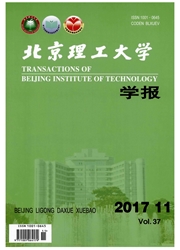

 中文摘要:
中文摘要:
以电性距离矢量 Mt表征165种非离子性有机物(NOC)的分子结构. 利用多元回归方法建立了122种NOC的生物富集因子(lg BCF)与32个 Mt的数学模型,其相关系数R为0.976. 经逐步回归建立最佳四变量(M15, M17, M36, M91)模型,其R为0.960;并以Jackknife法检验,其LOO交互检验系数(q2)为0.915. 这4个 Mt参数揭示了影响NOC生物富集因子的主要因素,结果表明该模型具有良好的估算能力与鲁棒性. 以111个NOC为训练集的生物富集模型作用于11个NOC的检验集,显示出良好的预测能力.
 英文摘要:
英文摘要:
Molecular electronegativity-distance vector (Mt) was used to describe the molecular structures of 165 nonionic organic compounds in this paper. A quantitative linear relationship between 32 Mt descriptors and bioconcentration factor (lg BCF) of 122 NOC was set up using the method of multiple linear regression (MLR). The satisfactory model of 4 parameters (such as M15, M17, M36, M91) was built by stepwise multiple regression and the Jackknifed method (the leave-one-out, LOO), of which the calibrated correlation coefficient (R) was 0.960 and the validated correlation coefficient (q2) was 0.915. The 4-variable model has shed light on some main structural factors influencing the BCF on NOC, which shows the good estimation ability and robustness. A prediction power for the external sample of 11 NOC was validated by the model built from the training set with 111 NOC.
 同期刊论文项目
同期刊论文项目
 同项目期刊论文
同项目期刊论文
 Random frog: An efficient reversible jump Markov Chain Monte Carlo-like approach for variable select
Random frog: An efficient reversible jump Markov Chain Monte Carlo-like approach for variable select Prediction of retention indices for frequently reported compounds of plant essential oils using mult
Prediction of retention indices for frequently reported compounds of plant essential oils using mult Variable complementary network: a novel approach for identifying biomarkers and their mutual associa
Variable complementary network: a novel approach for identifying biomarkers and their mutual associa Chromatographic fingerprint of Semen Armeniacae Amarae based on high-performance liquid chromatogram
Chromatographic fingerprint of Semen Armeniacae Amarae based on high-performance liquid chromatogram GC-MS Based Serum Metabolomic Analysis of Isoflurane-Induced Postoperative Cognitive Dysfunctional R
GC-MS Based Serum Metabolomic Analysis of Isoflurane-Induced Postoperative Cognitive Dysfunctional R A comprehensive investigation of proline fragmentation behavior in low-energy collision-induced diss
A comprehensive investigation of proline fragmentation behavior in low-energy collision-induced diss Chemical fingerprinting of Su-He-Xiang-Wan and attribution of major characteristic peaks for its qua
Chemical fingerprinting of Su-He-Xiang-Wan and attribution of major characteristic peaks for its qua Detection and Identification of Extra Virgin Olive Oil Adulteration by GC-MS Combined with Chemometr
Detection and Identification of Extra Virgin Olive Oil Adulteration by GC-MS Combined with Chemometr Application of Competitive Adaptive Reweighted Sampling Method to Determine Effective Wavelengths fo
Application of Competitive Adaptive Reweighted Sampling Method to Determine Effective Wavelengths fo QSRR Study on Flavor Compounds of Diverse Structures on Different Columns with the Help of New Chemo
QSRR Study on Flavor Compounds of Diverse Structures on Different Columns with the Help of New Chemo Application of fast Fourier transform cross-correlation and mass spectrometry data for accurate alig
Application of fast Fourier transform cross-correlation and mass spectrometry data for accurate alig Investigation of Scrambled Ions in Tandem Mass Spectra, Part 2. On the Influence of the Ions on Pept
Investigation of Scrambled Ions in Tandem Mass Spectra, Part 2. On the Influence of the Ions on Pept Effects of injection volume on chromatographic features and resolution in the process of counter-cur
Effects of injection volume on chromatographic features and resolution in the process of counter-cur Correlation and prediction of partition coefficient using nonrandom two-liquid segment activity coef
Correlation and prediction of partition coefficient using nonrandom two-liquid segment activity coef Nonlinear alignment of chromatograms by means of moving window fast Fourier transfrom cross-correlat
Nonlinear alignment of chromatograms by means of moving window fast Fourier transfrom cross-correlat A perspective demonstration on the importance of variable selection in inverse calibration for compl
A perspective demonstration on the importance of variable selection in inverse calibration for compl HUMAN PLASMA METABOLIC PROFILES OF CORONARY HEART DISEASE BY GAS CHROMATOGRAPHY-MASS SPECTROMETRY WI
HUMAN PLASMA METABOLIC PROFILES OF CORONARY HEART DISEASE BY GAS CHROMATOGRAPHY-MASS SPECTROMETRY WI Classification of vinegar samples based on near infrared spectroscopy combined with wavelength selec
Classification of vinegar samples based on near infrared spectroscopy combined with wavelength selec The continuity of sample complexity and its relationship to multivariate calibration: A general pers
The continuity of sample complexity and its relationship to multivariate calibration: A general pers 期刊信息
期刊信息
